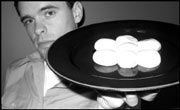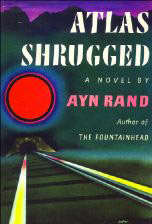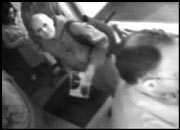My balls—there’s no other word for them—were a sensation. The women in the room were aghast when I displayed them, yet couldn’t help asking, “Can I touch them?” The only other man in the room, Walter Pisano, executive chef at Tulio Ristorante, had little to say. But then, his balls were even better.
Now that I’ve already lost a good portion of you (we’ll talk later, Mom), let me explain: The secret is in the handling. I have crafty, muscular, masculine hands, capable of ushering curd into its roundest, most resplendent form. The balls I speak of—sorry, fetishists—are balls of mozzarella.
The correct term for the activity, the ushering, is stretching. One stretches the raw material, the curd, into a ball. (The correct term for mozzarella balls, for their part, is boconccini—Italian for “little mouthfuls”—and the correct size is approximately 1 inch in diameter.) I stretched curd into boconccini at the aforementioned restaurant in celebration of its 10th anniversary. Today the anniversary is permanently announced with a lighted sign.
Ten years is nothing. The story of mozzarella began much earlier and much farther away, in ancient Rome, when doing what Romans did meant curdling fresh milk with rennet extracted from the stomachs of cattle, then dropping the result—the curd—in boiling hot whey (the watery leftovers of coagulation, although if you haven’t got buckets of whey about you, hot water works just fine). Once warmed by the whey, the curd can be shaped. When Miss Muffett was interrupted, she was probably making mozzarella balls.
We began with a cauldron of steaming water and a terrifying loaf of curd. (Pisano obtains his curd loaves from Grande Brand Fresh Curd in Brownsville, Wis.— 1-800-8-GRANDE—and his water from the tap.) Pisano cut a bread-slice-sized chuck of refrigerated curd for me and placed it in a bowl. Then he ladled into the bowl enough water to submerge the milky, quivering entity. The water is hot enough to burn you (about 170 degrees is ideal); when the curd reaches 125 degrees, it is warm enough to manipulate.
But right then, the curd was still dense and cold; a perfect opportunity to kick back and drink. We stood sipping chardonnay while poking our individual curd slices with wooden spoons. Another way to pass the time waiting for your curd to warm is to spill an uncinctured bottle of balsamic vinegar in the exact center of an expansive and expensive crimson rug—which I, spectacularly, did. If, for the rest of the event, Pisano was seething with rage, he managed to hide it. And, anyway, in no time at all, I was churning out bouncy little boconccini to the admiration of all.
Here’s how:
Lift the softened curd out of the bowl of water. If it falls apart in your hands, it’s too hot; if it feels rubbery and difficult to reshape, it’s too cold.
Hold it in your right hand, palm up. (If you’re left-handed, reverse this—or don’t, it may not matter, but the right and left designations will help for this explanation; we could not afford an illustrator.) Touch the tip of your right thumb to the tip of your right index finger. You are forming a ring, as one does when making the international gesture for A-OK.
With the thumb of your left hand, push the lump of curd through the ring formed by the thumb and index finger of your right hand. The ball of cheese that squeezes out the other end of the ring formed by your thumb and index finger will look something like a burgeoning bubblegum bubble. Push as much of the curd as you can through the tightening ring of your thumb and index finger until the ball that seems to be squeezing out of your fist is the size you’d like it.
Continue to squeeze the neck of the boconccino as if you are choking a small bird. You really want to kill this bird. If your strength flags, steel yourself: You must not stop until the boconccino has broken completely free of the rest of the curd lump. If you fail to exert continuous pressure, the boconccini will not come out tight and tidy. It will look like a mere shaky glob of cheese.
Eat immediately. Slice the mozzarella; slice vine-ripened tomatoes; douse them in vinegar; salt; and serve.
AS A CAPRESE FAN who’s long thought of fried mozzarella sticks as a vulgar bourgeois embarrassment, it was pleasing to learn I have a natural talent for boconccini production—for fashioning, with these brutal hands, perfectly urbane and immaculate globes of white cheese. Once they’re dropped in water, which is how supermarkets store them, boconccini disintegrate and shed their slick luster, but nestled on a plate, just after you’ve squeezed each one through your fist, they look like an array of exaggerated pearls or small, heavy hard-boiled eggs: Orbicular. Opalescent. Gorgeous.








